
Lemon Rolls
Ingredients
Recette pour un plat rectangulaire de 37 sur 22cm ou un moule circulaire de 30cm :
Thangzong :
- 35 g farine T55
- 180 g lait demi-écrémé
Pour la brioche :
- tout le thangzong
- 465 g farine T55
- 2 zestes finement râpés de citrons bio
- 75 g lait demi-écrémé
- 20 g sucre
- 5 g levure de boulangerie déshydratée
- 115 g œuf
- 110 g beurre doux
Pour l'intérieur des brioches :
- 130 g beurre doux
- 100 g sucre roux
- 100 g sucre
- 2 zestes finement râpés de citrons bio
Pour le glaçage :
- 100 g beurre ddoux
- 200 g mascarpone
- 50 g sucre glace
- 2 zestes finement râpés de citrons bio
Instructions
- Commencez tout d’abord par préparer le thangzong. Cela ne va vous prendre que 5 minutes de plus, mais donnera une texture très moelleuse à votre brioche. Versez la farine et le lait dans une petite casserole et fouettez bien pour enlever les éventuels grumeaux.
- Mettez à cuire sur feu doux tout en mélangeant au fouet.
- Le tout doit épaissir, sans bouillir. Coupez le feu et mettez de côté à tiédir 10 minutes.
- Dans la cuve de votre robot, placez tous les ingrédients de la brioche sauf le beurre. Si vous mettez de la levure fraiche ou une levure de boulanger déshydratée classique, délayez-la avec les 75g de lait avant de verser le tout dans la cuve. Si vous avez une levure déshydratée instantanée, le problème ne se pose et vous pouvez tout mettre ensemble sans délayer au préalable. N’oubliez pas d’ajouter l’intégralité du thangzong tiédi.
- Pétrissez avec le crochet pendant une bonne dizaine de minutes.
- Ajoutez le beurre demi-sel (à température ambiante c’est parfait ! ) et pétrissez de nouveau jusqu’à sa parfaite incorporation, pas plus.
- La pâte est terminée.
- Placez un film étirable au contact, puis placez le tout au réfrigérateur jusqu’au lendemain.
- Le lendemain, la brioche a bien gonflé et est bien froide. C’est ce qu’on veut !
- Pour le fond du plat, mélangez le sucre, le beurre fondu, la cannelle et le miel.
- Versez le tout dans le plat et étalez uniformément.
- Sortez la pâte de son emballage de film étirable et placez-la sur un plan de travail fariné.
- Étalez-la en un rectangle d’environ 45 sur 55cm. Essayez de garder le plus possible, une forme rectangulaire en tirant au besoin sur les 4 coins.
- Mélangez les ingrédients de l’intérieur des brioches, sauf la poudre d’amande qui ne se mettra qu’après.
- Étalez la farce uniformément sur la pâte.
- La poudre d’amande n’est pas indispensable, mais moi j’adore ! Dans ce cas, saupoudrez les 100g à ce moment là.
- Vous avez ici deux possibilités d’enroulement de la pâte. Soit dans la longueur qui donnera un boudin plus long avec un diamètre plus petit, soit par la largeur, qui donnera un boudin plus court et un diamètre plus large. Cela sera en fonction de votre choix. Je préfère le diamètre plus large. J’ai donc enroulé dans la largeur. J’ai ensuite divisé le boudin en 8 parts égales? Il faut tout d’abord marquer la pâte au couteau.
- Pour la couper, l’idéal est tout simplement un fil de cuisine. Il faut passer le fil sous le boudin et le placer au niveau de la marque réalisée. Passez le fil autour du boudin puis resserrer doucement le fil. Ce dernier va couper la pâte parfaitement. Si vous coupiez la pâte au couteau, il l’écraserait le boudin, alors que le fil conserve la forme circulaire !
- Pour que le gâteau ne s’ouvre pas en gonflant et en cuisant, il faut placer l’extrémité sous la pâte.
- Faites de même pour toutes les parts que vous placerez dans le plat, sur la couche aérienne de beurre et de sucre !
- Avec un petit spray d’eau, vaporisez les brioches sur leur surface, puis placez un film étirable sur le plat.
- De cette façon les brioches vont gonfler dans un milieu humide.
- Laissez pousser environ 2 h à température ambiante. On voit bien ici la différence de pousse, les brioches se touchent.
- Versez environ 80 à 90g de crème liquide entière (pas par brioche, mais pour la totalité du plat !) en arrosant chaque brioche uniformément.
- Mettez à cuire 40 à 45 minutes dans un four préchauffé sur mode ventilé (chaleur tournante) à 155°C.
- Si vous voulez, vous pouvez vous arrêter à ce moment là. Pour faire des cinnamon rolls plus américains, il manque alors le glaçage au cream cheese. Mettez le beurre demi-sel et le cream cheese dans un plat allant au four à micro-ondes.
- Faites fondre le tout pendant 1 minute environ, puis versez le sucre glace et la vanille liquide.
- Mélangez bien au fouet puis versez sur les cinnamon rolls.
- À déguster tiède ! Les brioches se réchauffent sans problème en les passant 15 secondes au four à micro-ondes.
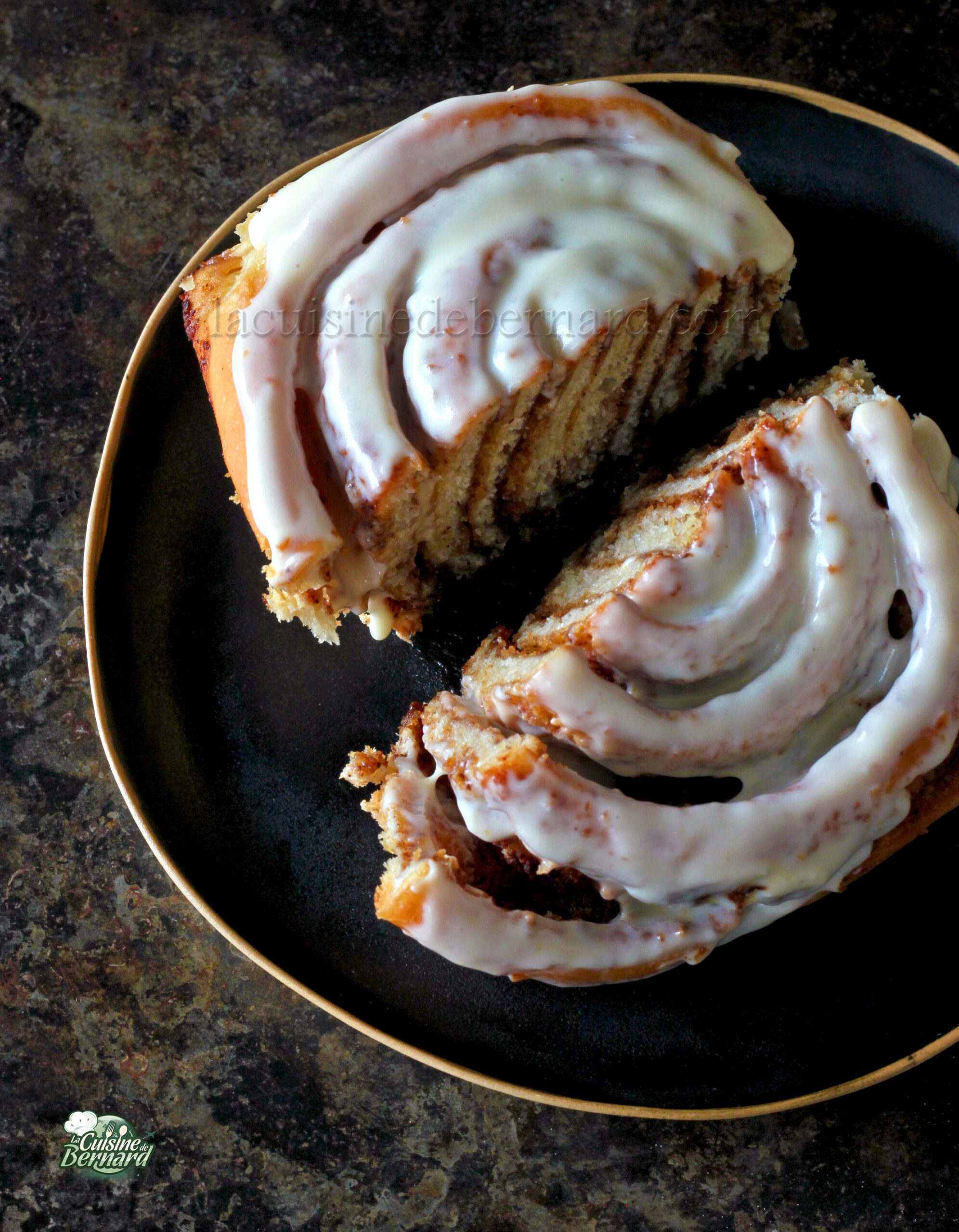
I’ve been meaning to add this recipe for ages! But first I wanted to gather all the elements and tips so that everything would be just the way I wanted it. Here, you can either make Swedish Kanelbullar by adding a little cardamom, or cinnamon rolls without the cardamom, but adding a decadent cream cheese glaze. I’ve already suggested kanelsnurrer. In the end, cinnamon rolls are even easier to make. I’d like to add the thangzong method, which adds an extraordinary softness to the dough. A delight that perfumes the whole house as it cooks!
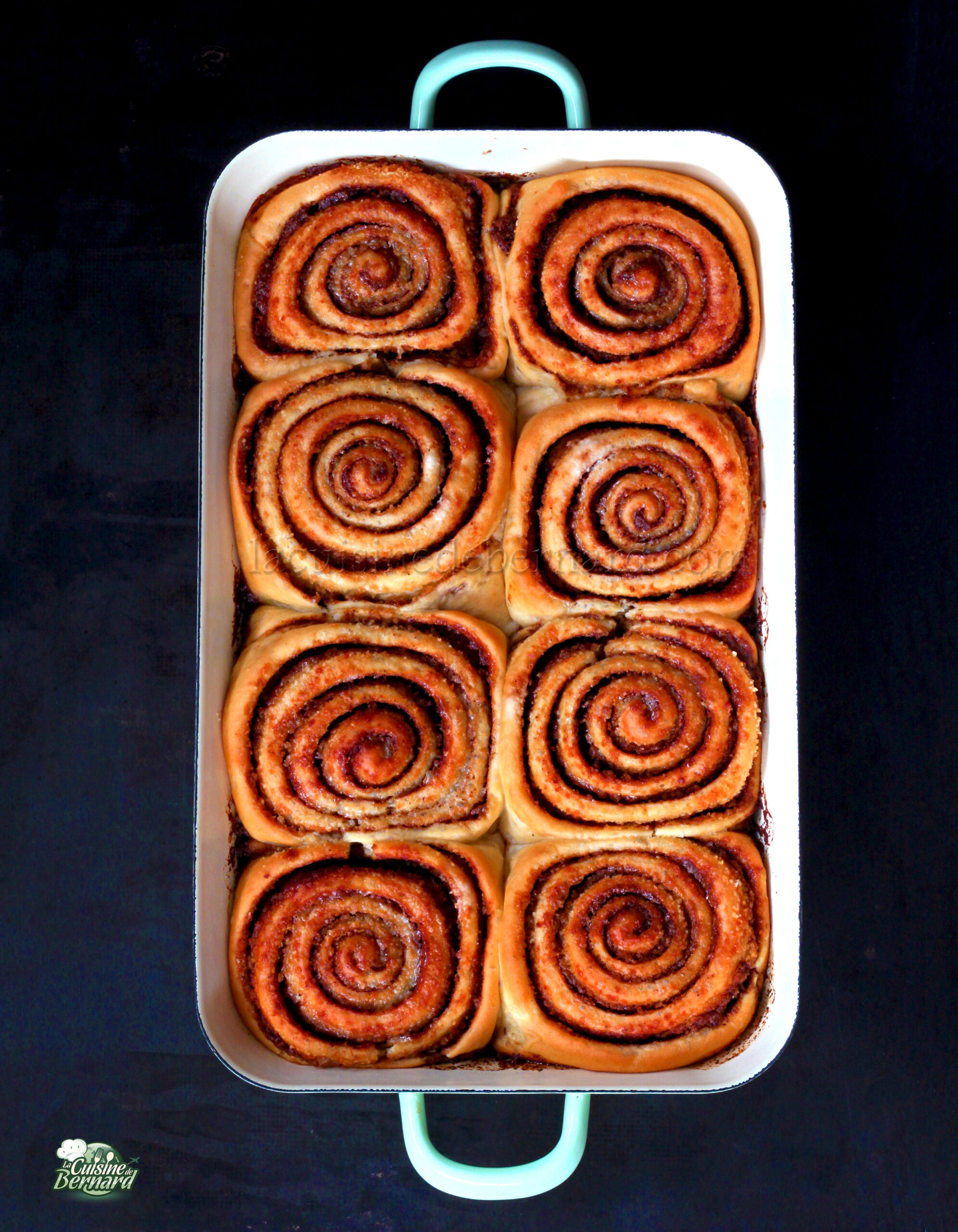
Recipe for a 37 x 22cm rectangular dish or a 30cm circular mould:
Thangzong:
- 35g of T55 flour
- 180g of semi-skimmed milk
For the brioche :
- all the thangzong tiédi
- 465g of flour T55
- 1 to 2 teaspoons cardamom powder (only for the kannelbullar version)
- 75g semi-skimmed milk
- 20g of sugar
- 1 teaspoon of liquid vanilla
- 1 sachet of 5g instant dried yeast or 10g fresh yeast
- 115g egg (two large eggs)
- 110g of semi-salted butter
For the bottom of the dish (optional) :
- 60g of melted semi-salted butter
- 90g brown or blond vergeoise
- 20g honey
- 8g cinnamon powder
For the inside of the brioches :
- 130g of melted semi-salted butter
- 210g brown or blond vergeoise (to taste)
- 10g cinnamon powder
- 100g almond powder (optional but so good!)
Pour cream over buns before baking:
- 85g full cream
For the cream (optional) :
- 100g of semi-salted butter
- 200g cream cheese (Philadelphia type)
- 35g of powdered sugar
- 1/2 teaspoon of liquid vanilla
Start by preparing the thangzong. This will only take an extra 5 minutes, but will give your brioche a very soft texture. Pour the flour and milk into a small saucepan and whisk well to remove any lumps.

Cook over low heat while whisking.

The whole thing should thicken, without boiling. Turn off the heat and set aside to cool for 10 minutes.
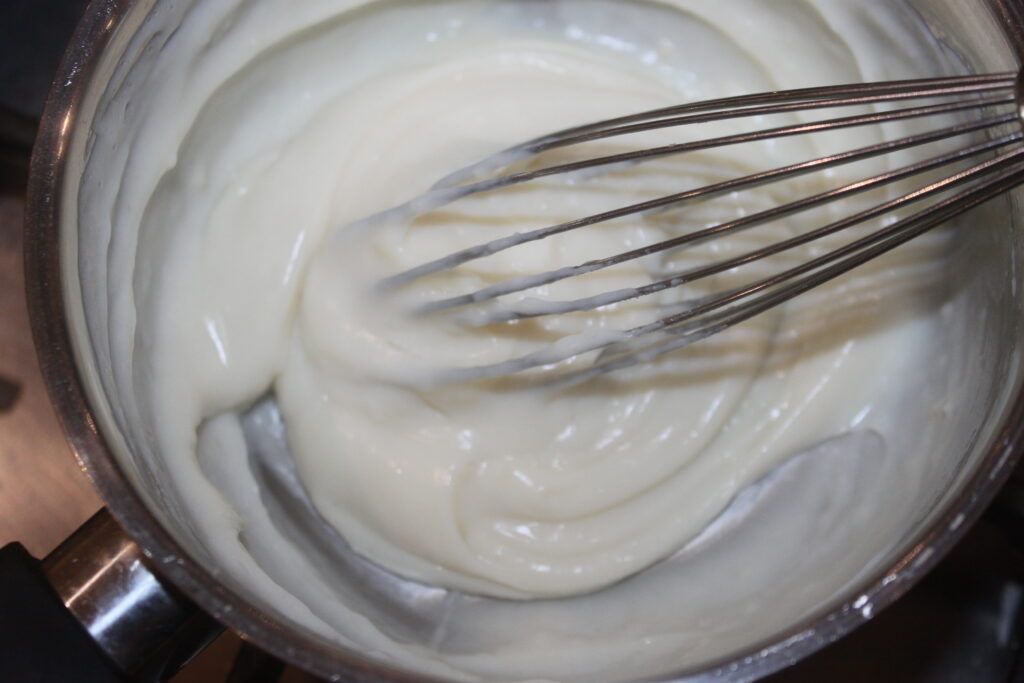
Place all the brioche ingredients except the butter in the bowl of your food processor. If using fresh yeast or classic dehydrated baker’s yeast, dilute it with the 75g of milk before pouring into the bowl. If you have instant dried yeast, the problem doesn’t arise and you can put everything together without diluting first. Don’t forget to add all the warmed thangzong.
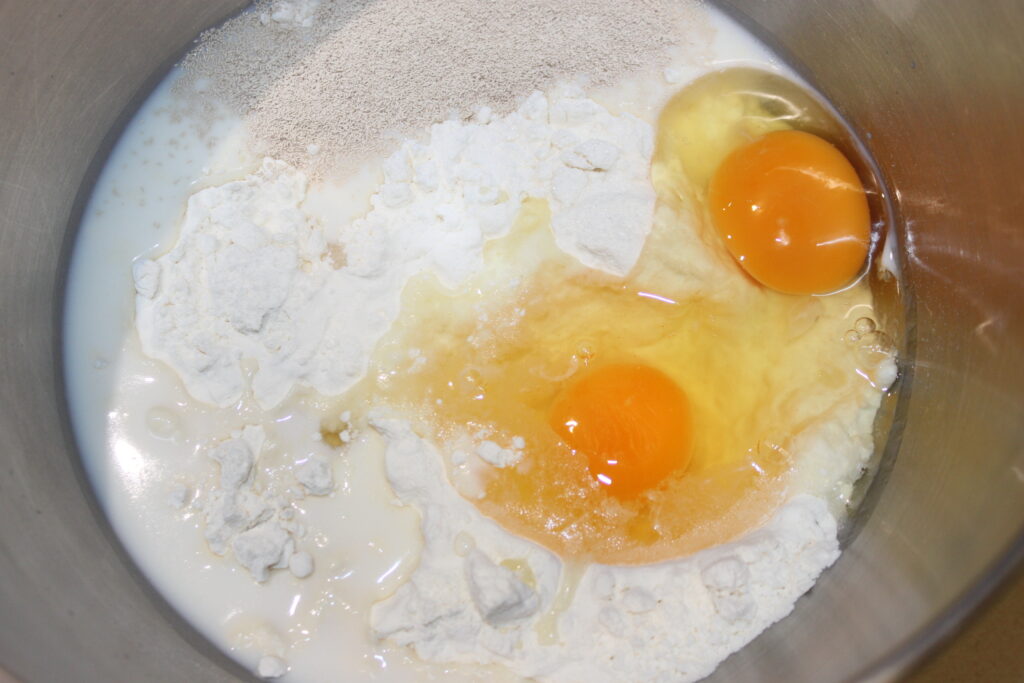
Knead with the hook for a good ten minutes.
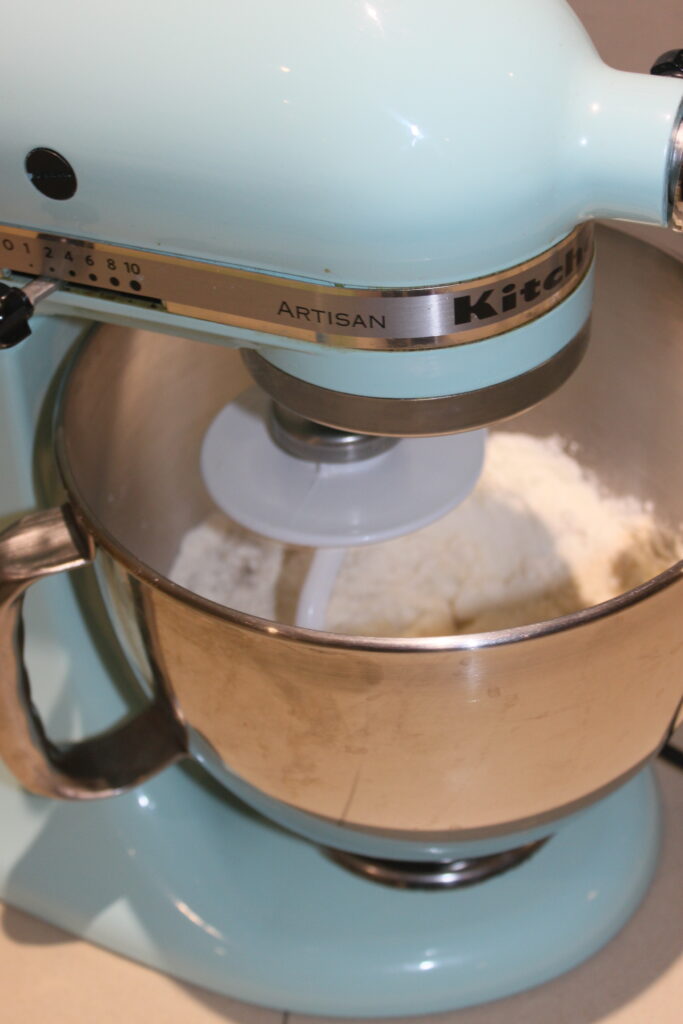
Add the semi-salted butter (at room temperature it’s perfect!) and knead again until perfectly incorporated, no more.
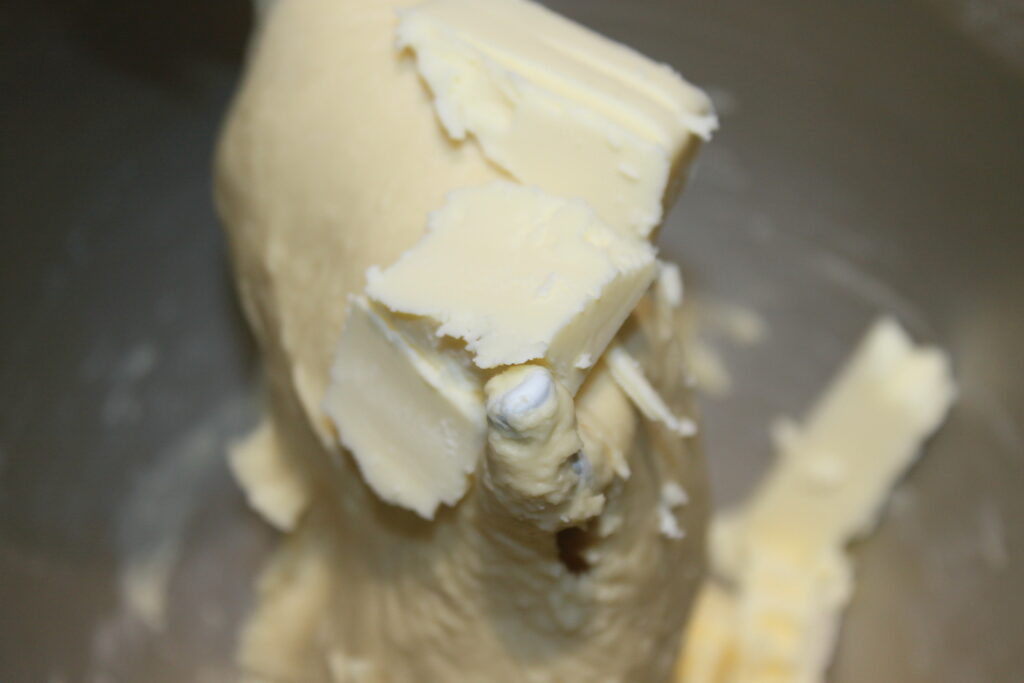
The dough is finished.
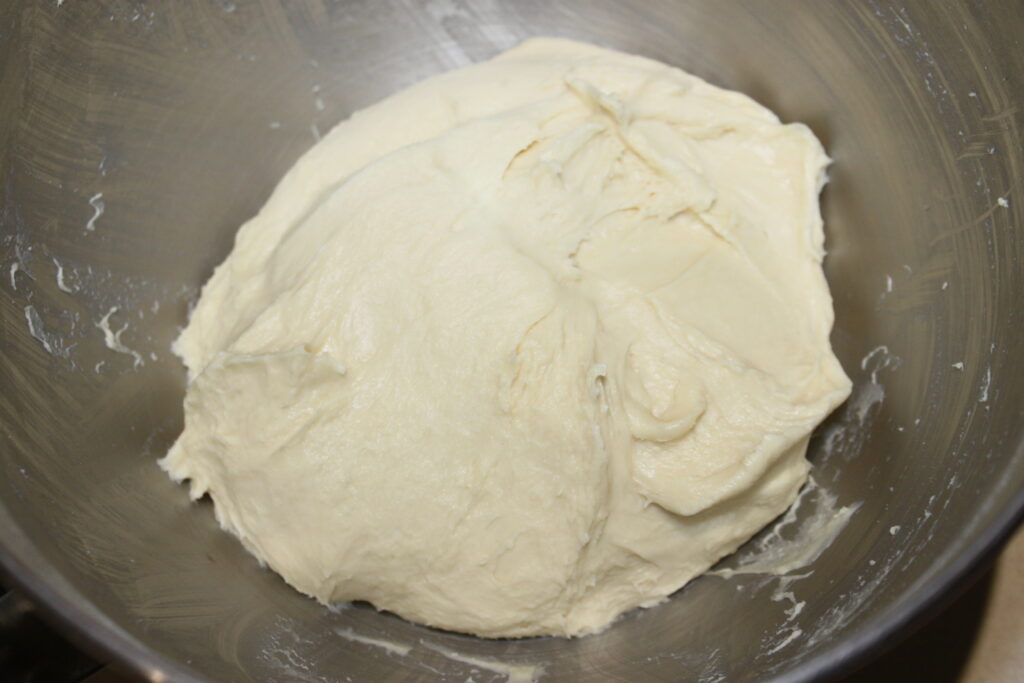
Cover with cling film and refrigerate overnight.

The next day, the brioche has puffed up nicely and is quite cold. That’s what we want!
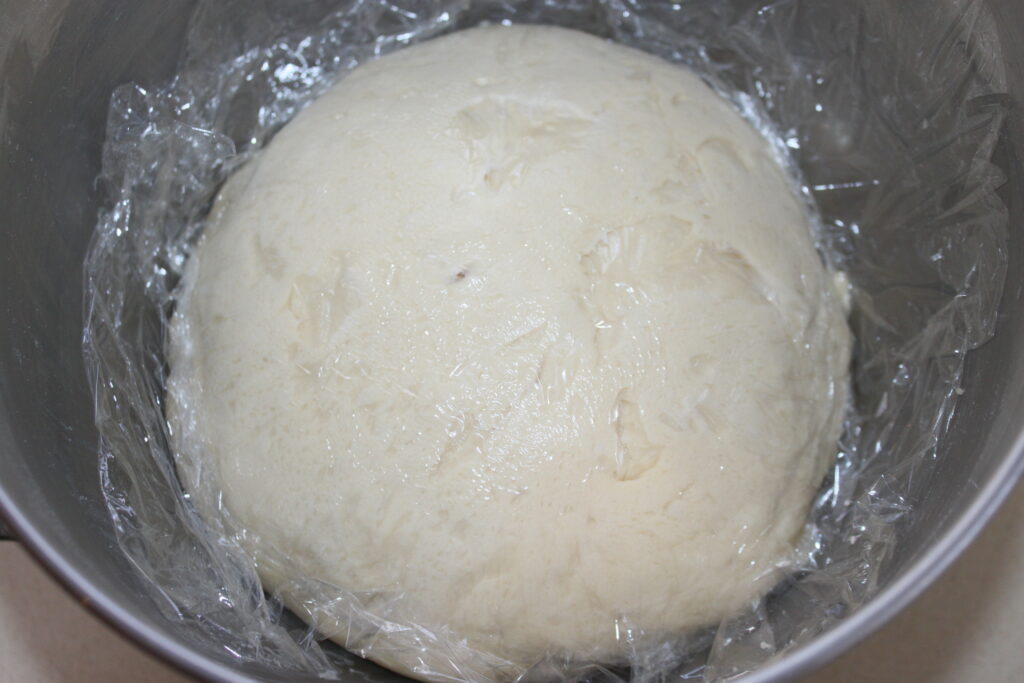
For the base of the dish, mix together the sugar, melted butter, cinnamon and honey.

Pour into the dish and spread evenly in a very thin layer.
This step is not compulsory, but the underside of the buns will be deliciously soft and decadent.
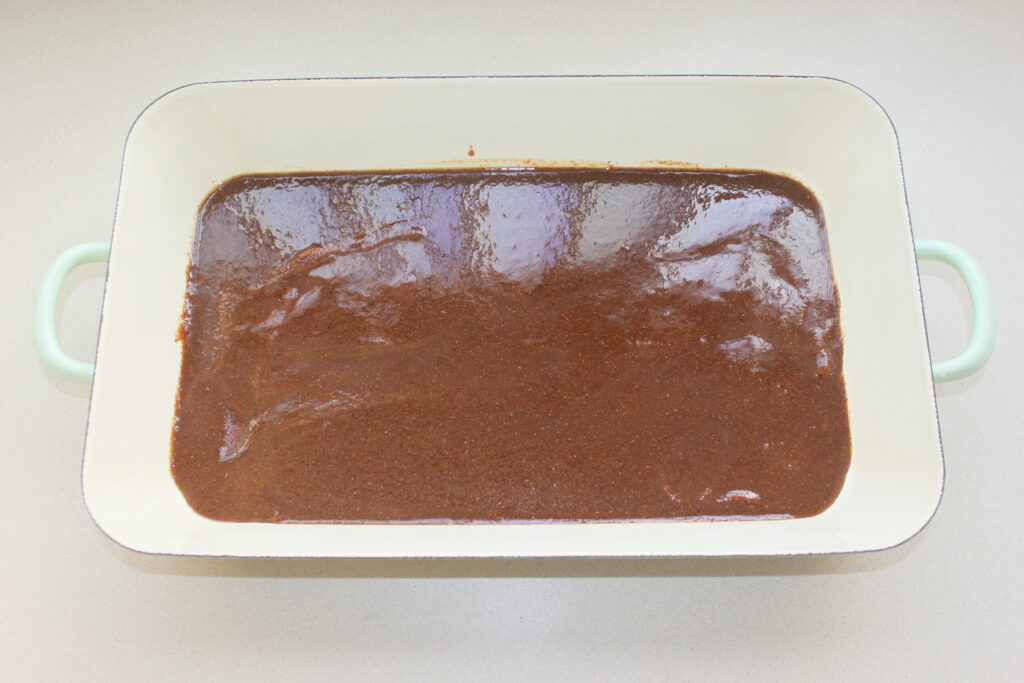
Remove the dough from the cling film and place on a floured work surface.
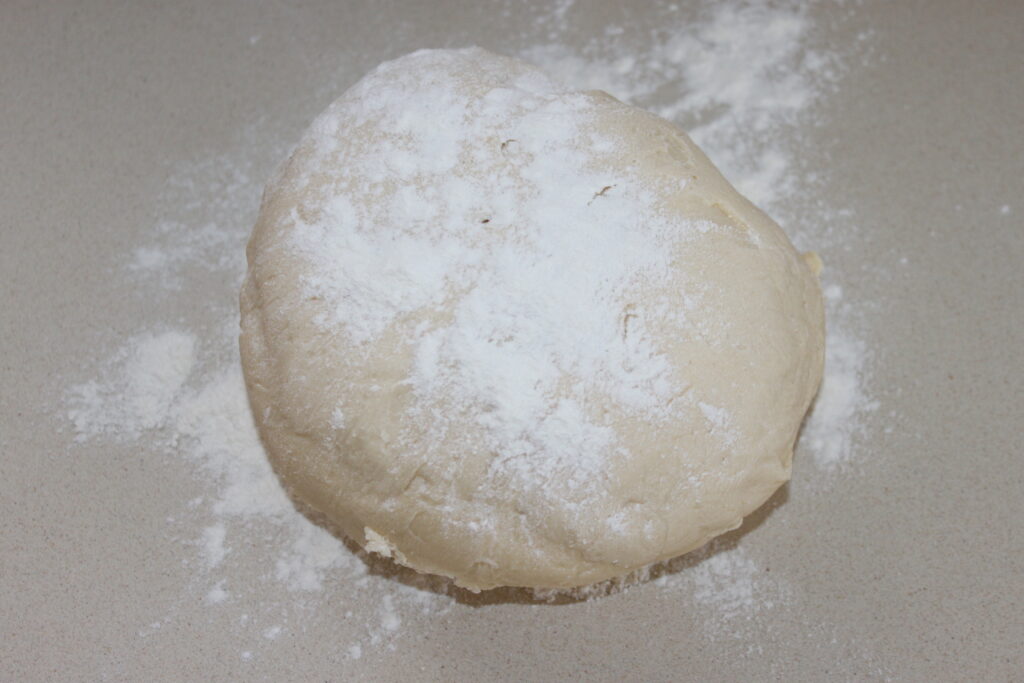
Roll out into a rectangle measuring approximately 45 x 55cm. Try to keep as rectangular a shape as possible, pulling on the 4 corners if necessary.
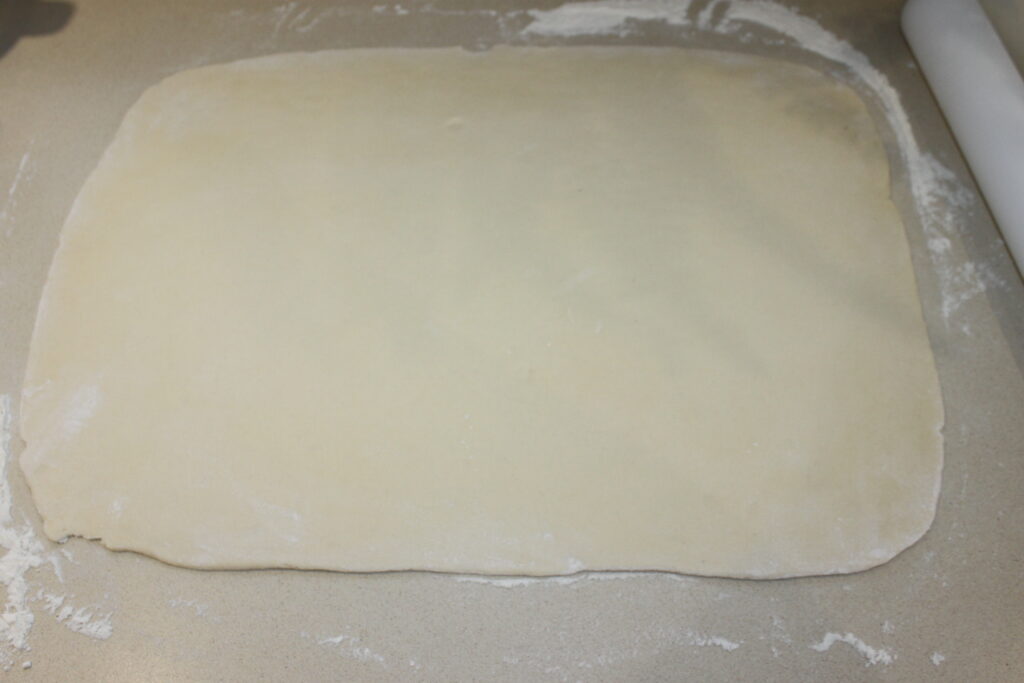
Mix the ingredients inside the buns, except for the almond powder, which you’ll add later.
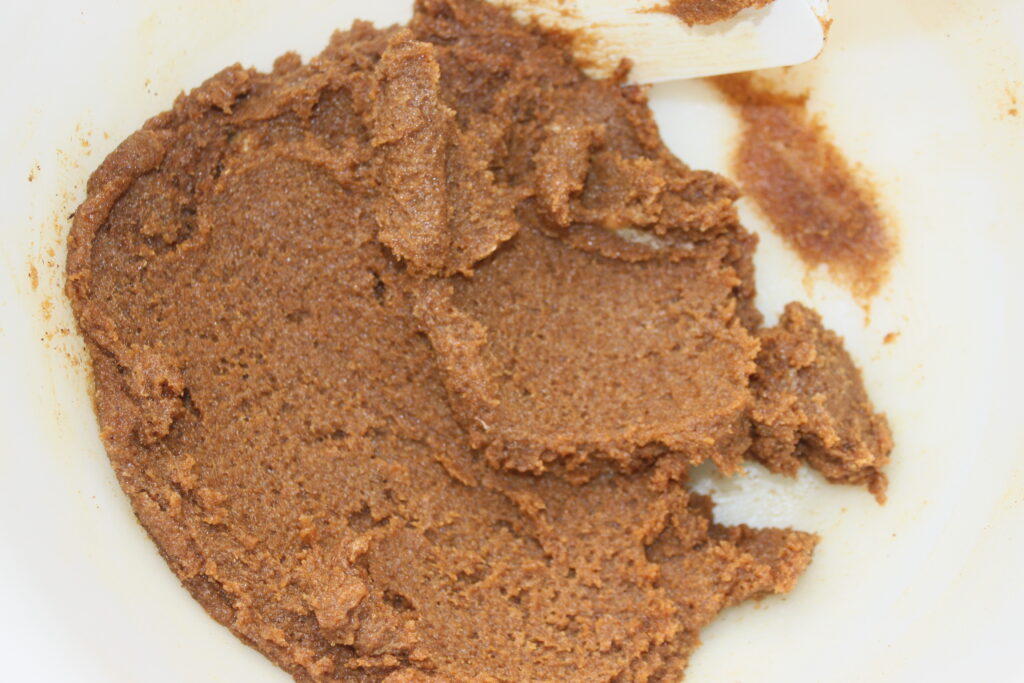
Spread the filling evenly over the dough.
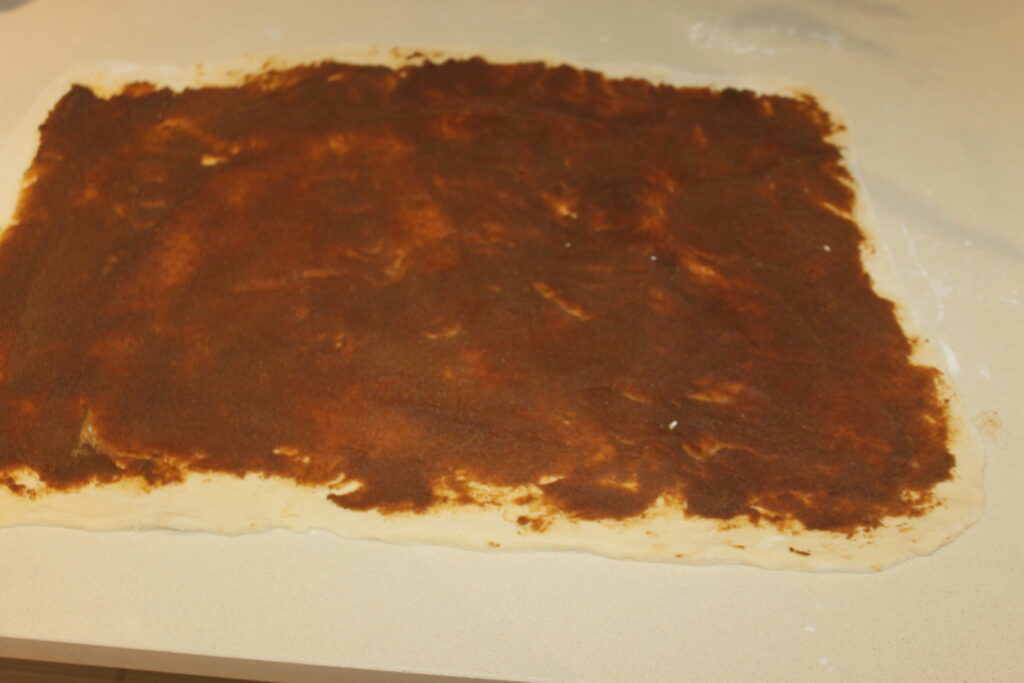
Almond powder is not essential, but I love it! In this case, sprinkle the 100g at this point.
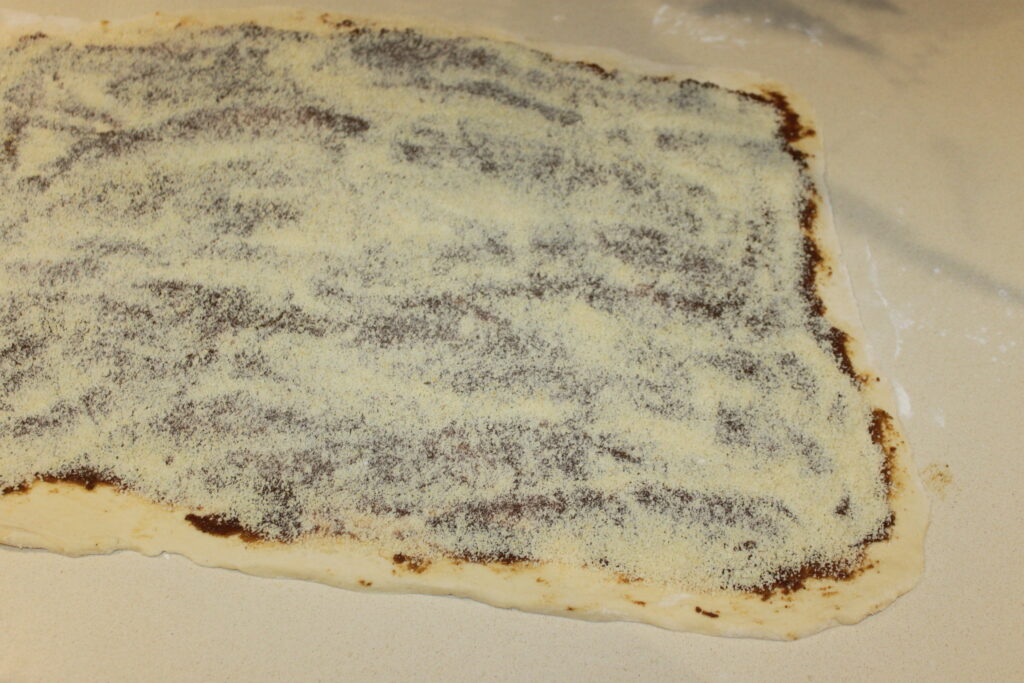
Here you have two possibilities for rolling up the dough. Either in length, which will give a longer flange with a smaller diameter, or in width, which will give a shorter flange with a wider diameter. This will depend on your choice. I prefer the larger diameter. So I rolled up the width. I then divided the boudin into 8 equal parts? First, mark the dough with a knife.
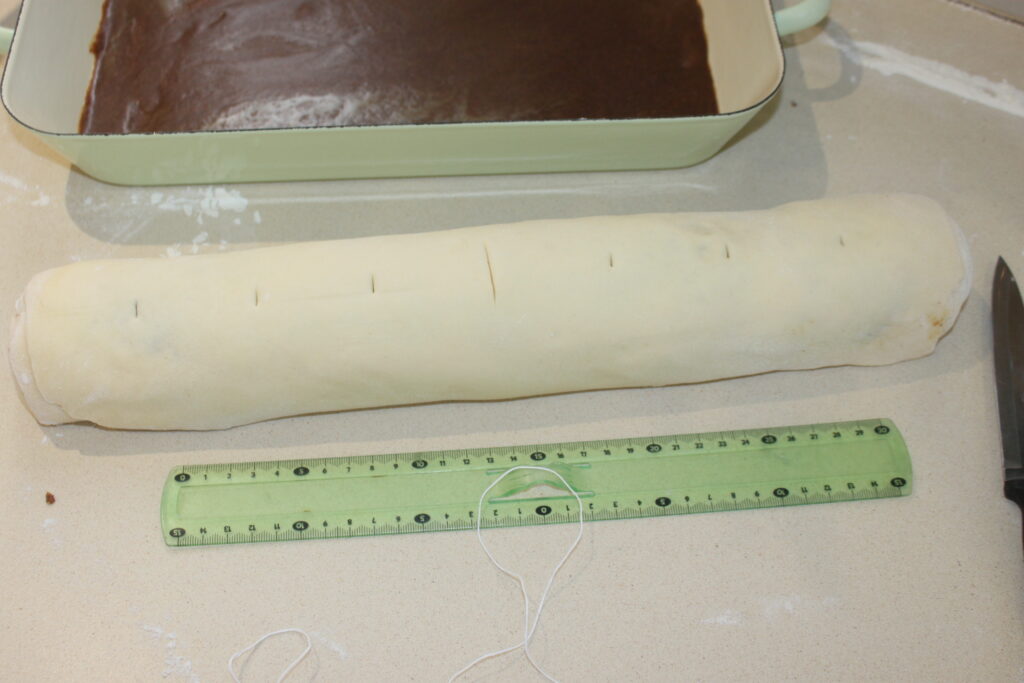
To cut it, simply use a kitchen wire. Pass the wire under the flange and place it at the mark. Pass the thread around the coil, then gently tighten the thread. This will cut the dough perfectly. If you were to cut the dough with a knife, it would crush the sausage, whereas the thread retains its circular shape!

To prevent the cake from opening as it puffs up and bakes, place the end under the pastry.

Do the same for all the slices you place in the dish, on top of the airy layer of butter and sugar!
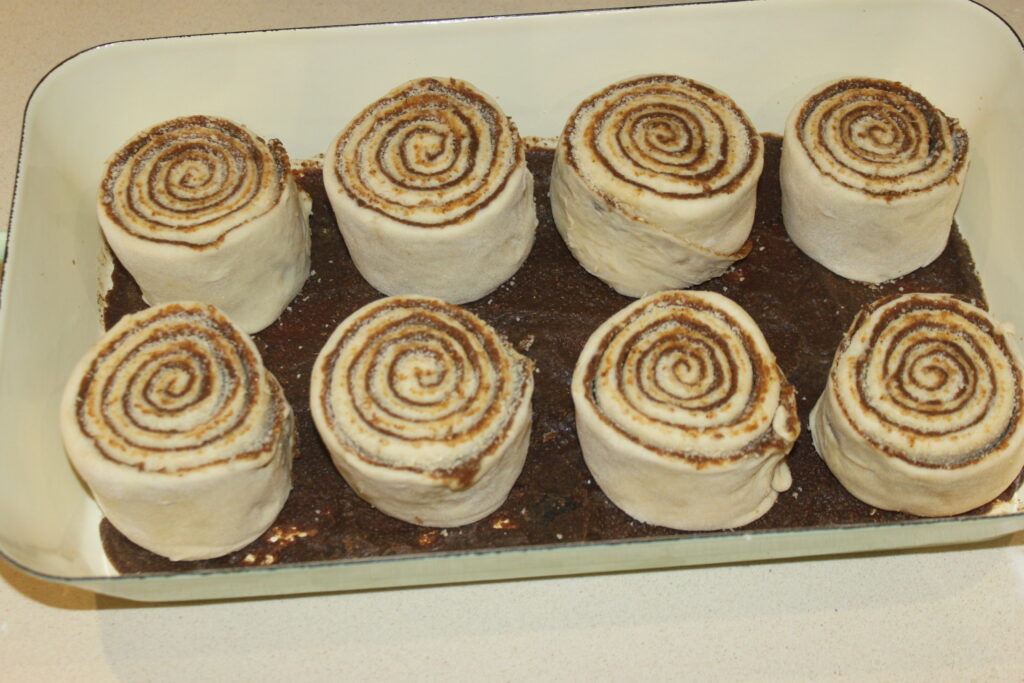
Using a small spray of water, spray the surface of the buns, then place cling film over the dish.
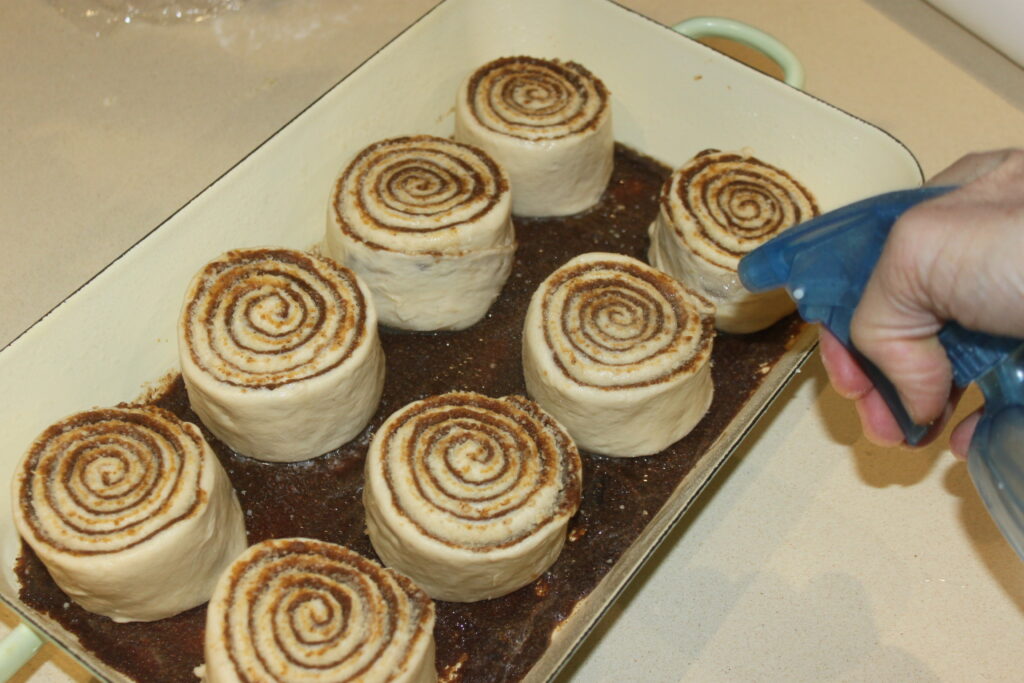
In this way, the buns will swell in a moist environment.
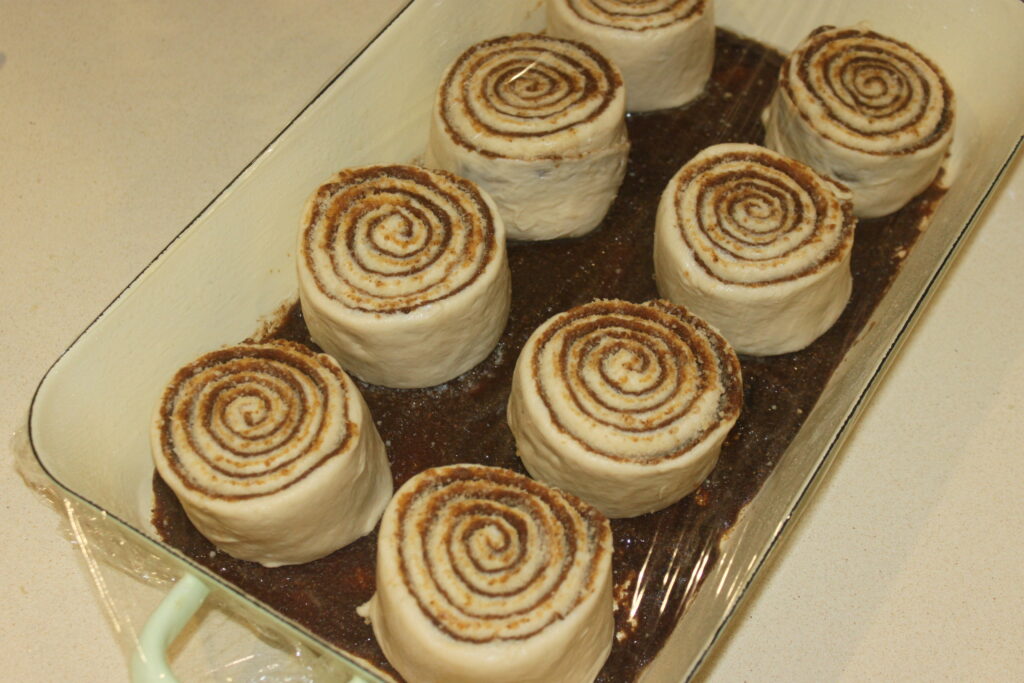
Leave to grow for about 2 h at room temperature. The difference in growth is clearly visible here, with the buns touching.
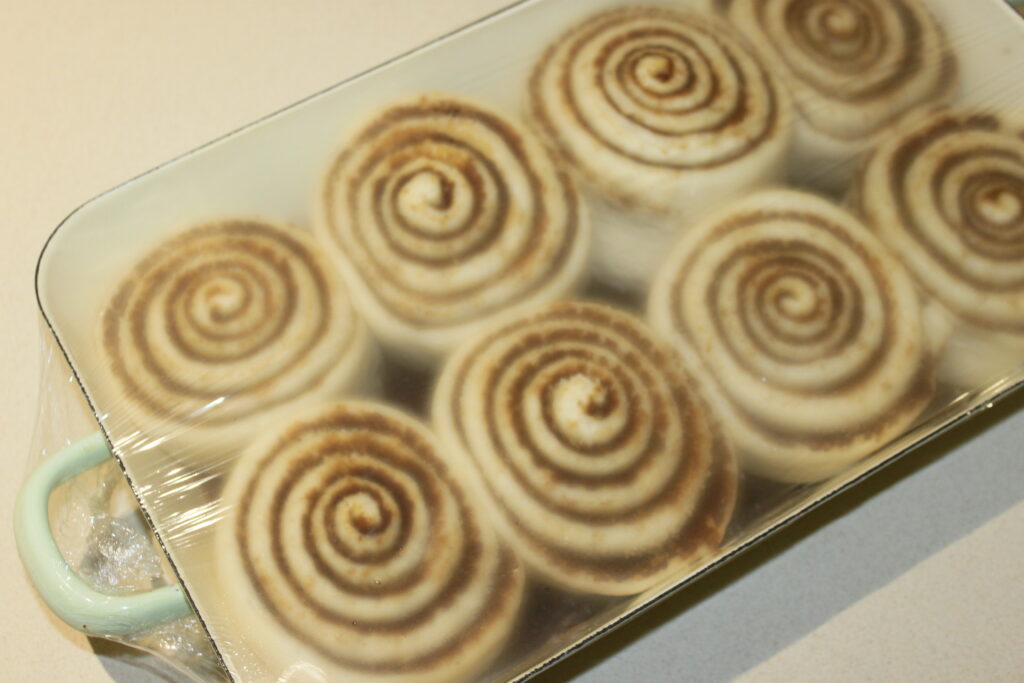
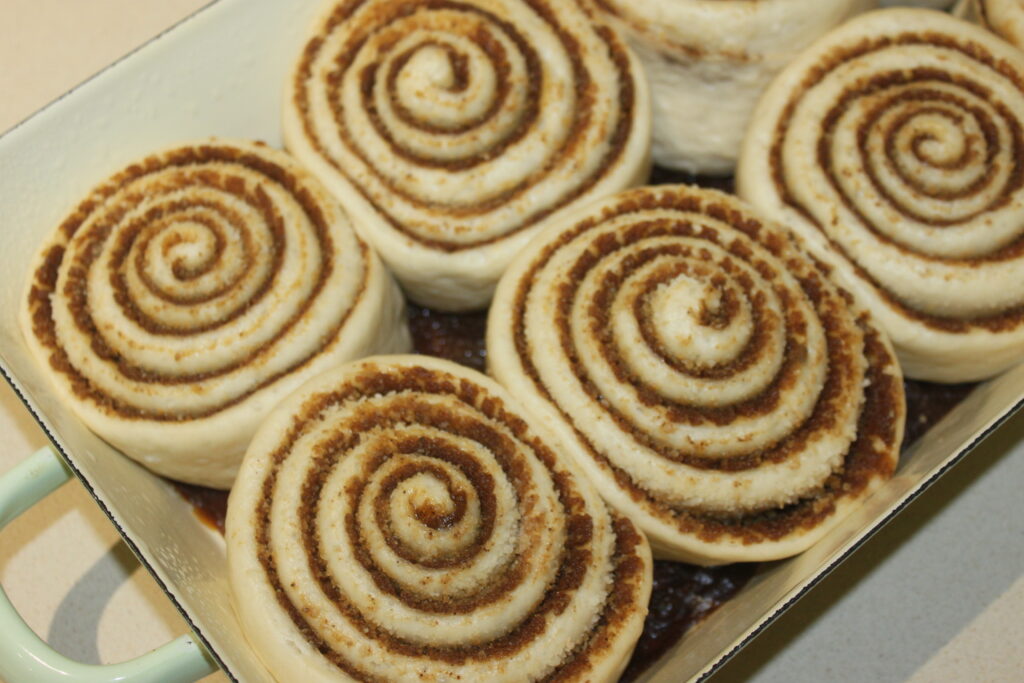
Pour in around 80-90g of whole cream (not per brioche, but for the whole dish!), basting each brioche evenly.
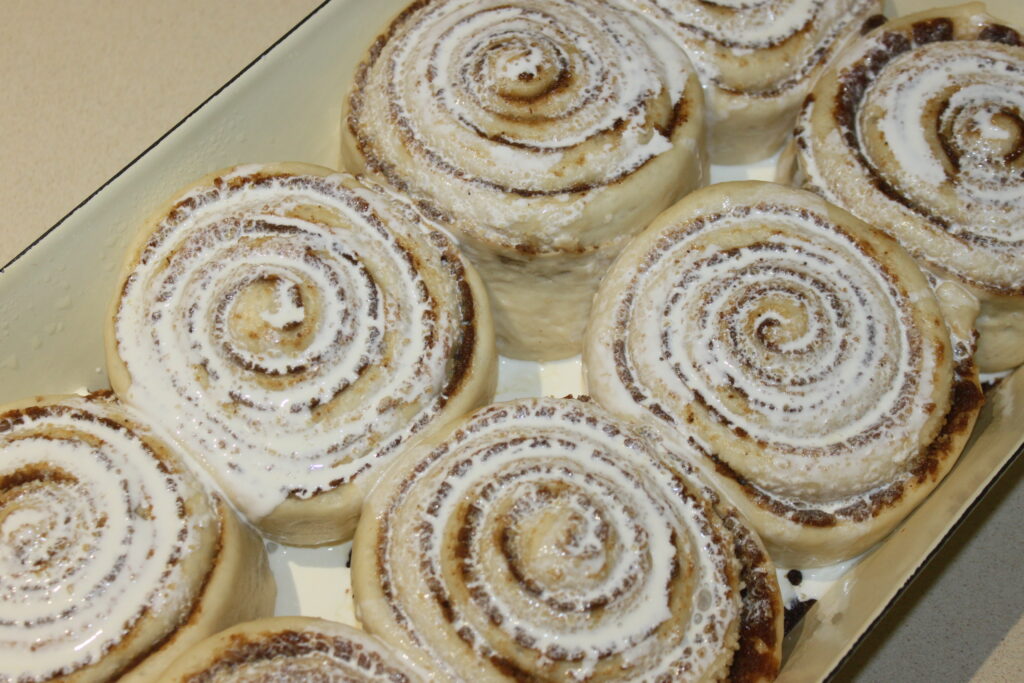
Bake for 40-45 minutes in an oven preheated to 155°C in fan-assisted mode.
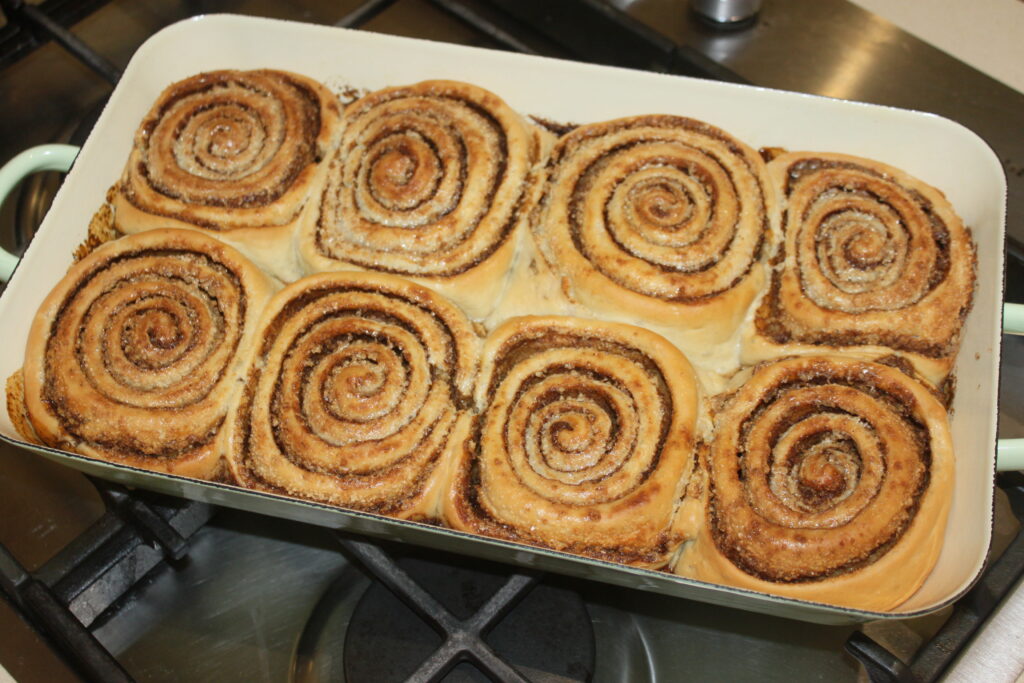
If you like, you can stop at this point. To make more American cinnamon rolls, the cream cheese glaze is missing. Place the semi-salted butter and cream cheese in a microwave-safe dish.
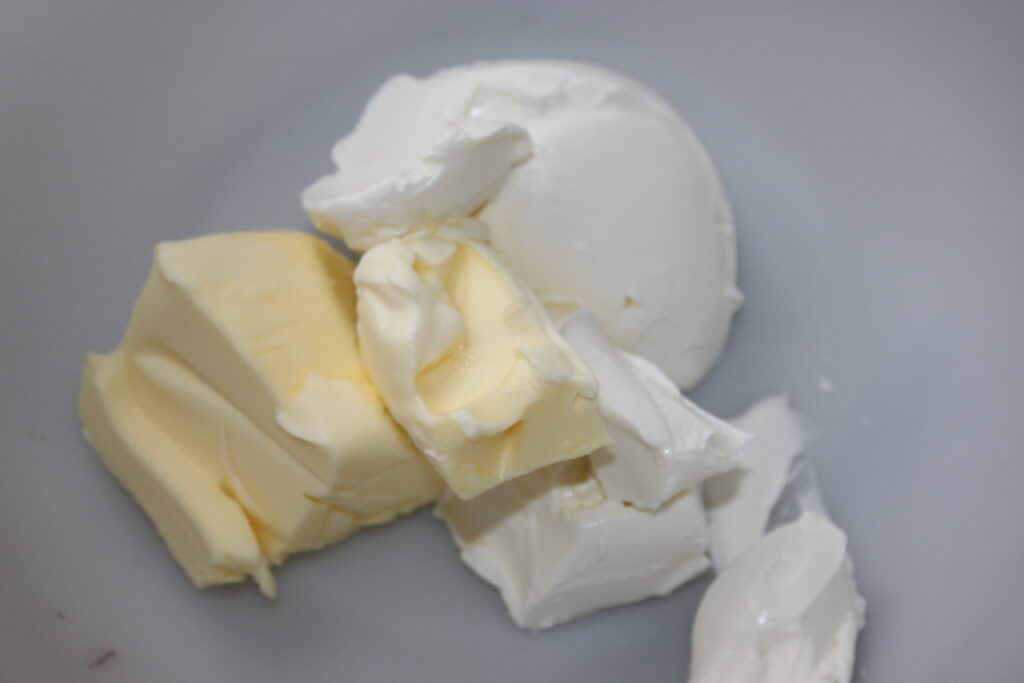
Melt for about 1 minute, then pour in the powdered sugar and liquid vanilla.
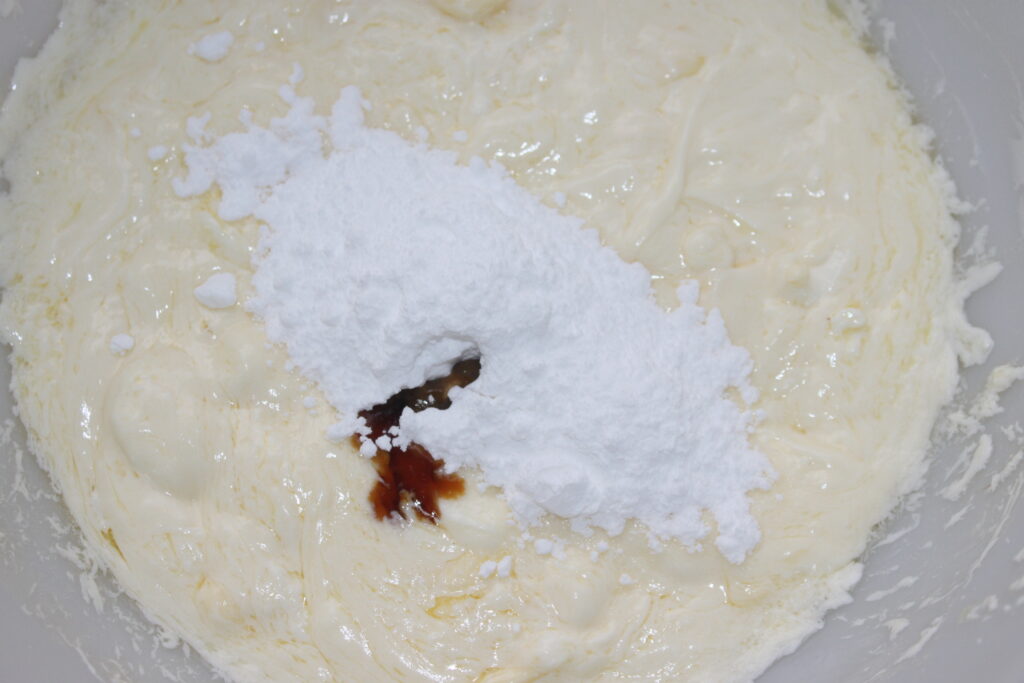
Whisk well, then pour over the cinnamon rolls.

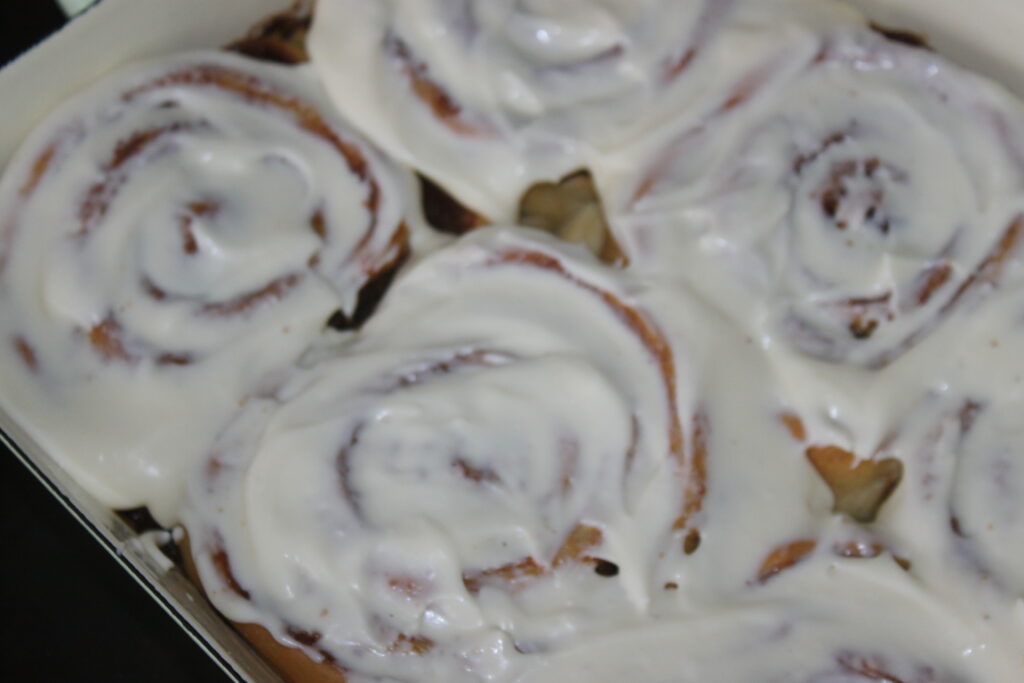
To be enjoyed warm! The buns can be easily reheated in the microwave for 15 seconds.
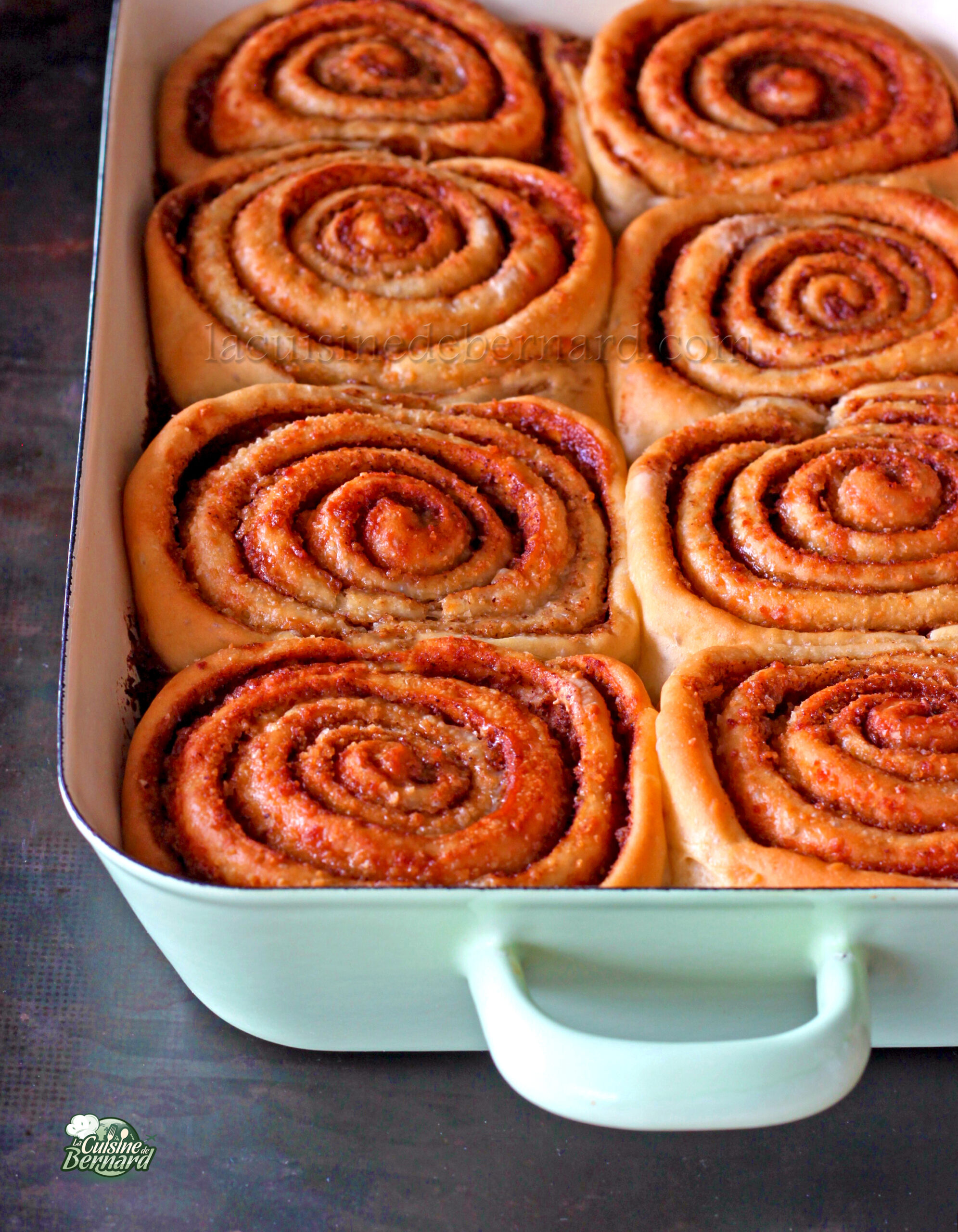



Kannelbullar / Cinnamon Roll
Ingredients
Recipe for a 37 x 22cm rectangular dish or a 30cm circular mould:
Thangzong:
- 35 g T55 flour
- 180 g semi-skimmed milk
For the brioche :
- the whole thangzong
- 465 g T55 flour
- 1 or 2 c. coffee cardamom powder for the kanelbullar version
- 75 g semi-skimmed milk
- 20 g sugar
- 1 c. coffee liquid vanilla
- 5 g dehydrated baker’s yeast
- 115 g egg
- 110 g Half-salt butter
For the bottom of the dish :
- 60 g melted semi-salted butter
- 90 g brown or blond vergeoise
- 20 g honey
- 8 g powdered cinnamon
For the inside of the buns :
- 130 g melted semi-salted butter
- 210 g brown or blond vergeoise
- 10 g powdered cinnamon
- 100 g almond powder optional
For the glaze :
- 100 g Half-salt butter
- 200 g Philadelphia type cream cheese
- 35 g powdered sugar
- 1/2 c. coffee liquid vanilla
Instructions
- Start by preparing the thangzong. This will only take an extra 5 minutes, but will give your brioche a very soft texture. Pour the flour and milk into a small saucepan and whisk well to remove any lumps.
- Cook over low heat while whisking.
- The whole thing should thicken, without boiling. Turn off the heat and set aside to cool for 10 minutes.
- Place all the brioche ingredients except the butter in the bowl of your food processor. If using fresh yeast or classic dehydrated baker’s yeast, dilute it with the 75g of milk before pouring into the bowl. If you have instant dried yeast, the problem doesn’t arise and you can put everything together without diluting first. Don’t forget to add all the warmed thangzong.
- Knead with the hook for a good ten minutes.
- Add the semi-salted butter (at room temperature it’s perfect!) and knead again until perfectly incorporated, no more.
- The dough is finished.
- Cover with cling film and refrigerate overnight.
- The next day, the brioche has puffed up nicely and is quite cold. That’s what we want!
- For the base of the dish, mix together the sugar, melted butter, cinnamon and honey.
- Pour into the dish and spread evenly.
- Remove the dough from the cling film and place on a floured work surface.
- Roll out into a rectangle measuring approximately 45 x 55cm. Try to keep as rectangular a shape as possible, pulling on the 4 corners if necessary.
- Mix the ingredients inside the buns, except for the almond powder, which you’ll add later.
- Spread the filling evenly over the dough.
- Almond powder is not essential, but I love it! In this case, sprinkle the 100g at this point.
- Here you have two possibilities for rolling up the dough. Either in length, which will give a longer flange with a smaller diameter, or in width, which will give a shorter flange with a wider diameter. This will depend on your choice. I prefer the larger diameter. So I rolled up the width. I then divided the boudin into 8 equal parts? First, mark the dough with a knife.
- To cut it, simply use a kitchen wire. Pass the wire under the flange and place it at the mark. Pass the thread around the coil, then gently tighten the thread. This will cut the dough perfectly. If you were to cut the dough with a knife, it would crush the sausage, whereas the thread retains its circular shape!
- To prevent the cake from opening as it puffs up and bakes, place the end under the pastry.
- Do the same for all the slices you place in the dish, on top of the airy layer of butter and sugar!
- Using a small spray of water, spray the surface of the buns, then place cling film over the dish.
- In this way, the buns will swell in a moist environment.
- Leave to grow for about 2 h at room temperature. The difference in growth is clearly visible here, with the buns touching.
- Pour in around 80-90g of whole cream (not per brioche, but for the whole dish!), basting each brioche evenly.
- Bake for 40-45 minutes in an oven preheated to 155°C in fan-assisted mode.
- If you like, you can stop at this point. To make more American cinnamon rolls, the cream cheese glaze is missing. Place the semi-salted butter and cream cheese in a microwave-safe dish.
- Melt for about 1 minute, then pour in the powdered sugar and liquid vanilla.
- Whisk well, then pour over the cinnamon rolls.
- To be enjoyed warm! The buns can be easily reheated in the microwave for 15 seconds.
